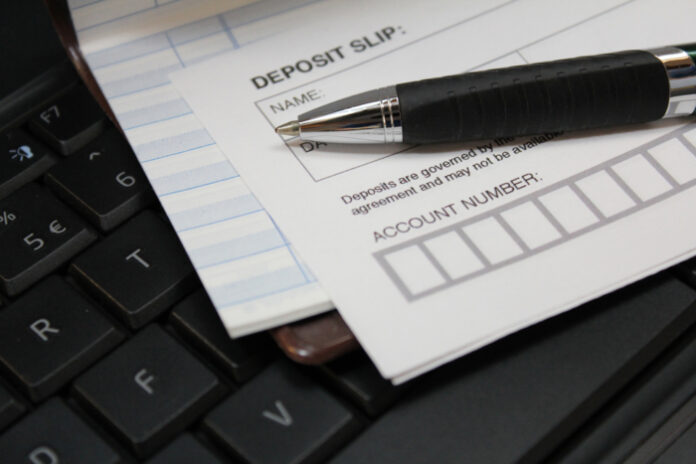As a business owner or freelancer, you will know how important depositing money is for your cash flow and for your profits.
There are several different ways that you can get money into your business. Customers can pay for goods and services in different ways, including cash, checks, card and even eWallets these days. You might get investment money from a bank loan or through financial backers, for example.
Cash payments and other deposits can become a bit of a nightmare, especially in these digital times where most businesses are accepting online payments and using card machines. While these payments are usually faster and require less work for the business, they often incur charges and fees for the company, which is why cash still remains king in many ways.
With this being said, getting cash and check payments into your business account means that you will need to actually visit a physical bank, and that means you need to use a deposit slip.
What Is a Deposit Slip?
Although we are easing into a more online world, even in banking, there are still certain things that you will need to do in a physical bank — and one of those things is paying in cash (or checks).
The deposit slip is a small piece of paper that you hand into the bank with the cash and checks that you want to put into your account, and it tells the bank teller what you are depositing and where you want it to go.
Why Do We Use Deposit Slips?
If you were to turn up at a bank with a fistful of dollars and a handful of checks, you’d have to give the teller all the details verbally — how much you are giving, and where you want it to go. This can obviously lead to mistakes, and it will take an awfully long time to sort out.
Using a deposit slip helps you ensure that all the cash and checks are accounted for, that you know how much you are going to receive into your account, and that you have an opportunity to ensure that all the details are correct (especially the account number, for example).
What Goes on a Deposit Slip?
Each bank will have a specific deposit slip that they want you to use, but the details are broadly the same. You will need to include the following:
- The date: This is important because you will need to record when you are depositing the cash and checks for your accounting (and it will make a difference for the teller who is recording it).
- Account number: If your deposit slip does not have this prefilled, you will need to add this to the slip to direct the cash and checks to where they need to go.
- Total amount of cash.
- Total amount of checks: make sure the checks are appropriately endorsed.
- Signature.
When you have completed this, hand the deposit slip with the cash and checks to the teller. Some people may use the ATM to complete this transaction, but many business owners find that physically handing it to the teller is faster and more secure (using the ATM might mean that the deposit is not completed immediately.
Common Mistakes on a Deposit Slip
Some things to avoid if you want to make sure your deposits are accurate:
- Not filling the slip out completely.
- Using the wrong account details.
- Forgetting to endorse checks.
- Trying to deposit third-party or post-dated checks.
- Leaving the amounts ambiguous.
- Putting in the wrong amounts.
For the very best results, make sure that you take your time filling the form out, that you double check the total amounts for both checks and cash, and when you write the totals down, that you include them in both numbers and words.
When you have done it a few times, all these details will become second nature.
Find a Home-Based Business to Start-Up >>> Hundreds of Business Listings.

















































